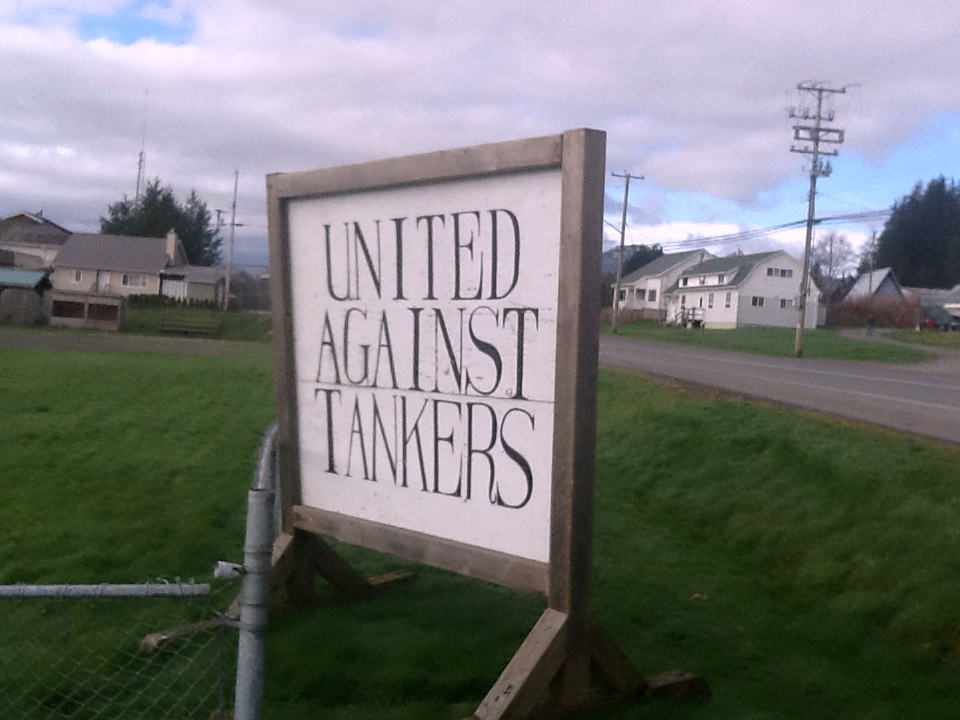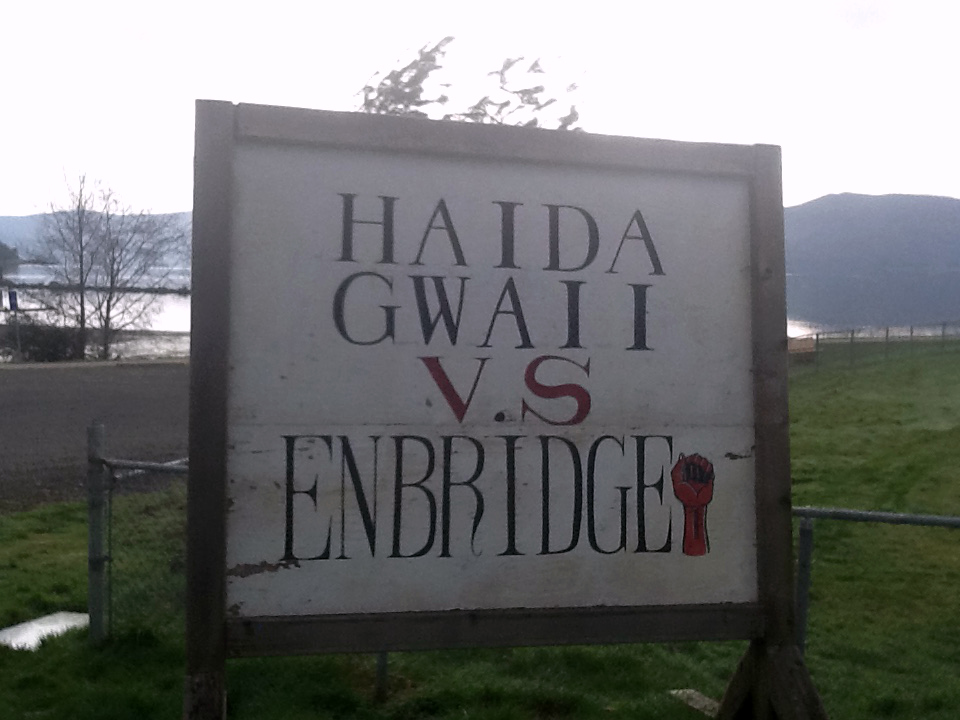
One of the joys of leaving your residence on one coast (Annapolis Valley, Nova Scotia) and moving to a new temporary home on the west coast (Haida Gwaii) is the opportunity to ‘unclutter’ the mind. What are the global concerns that affect us all across Canada? What are the unique responses that are determined by ‘place’?
As Naomi Klein would say: “This changes everything.” The conflicts between climate change and our trade agreements influence economic opportunities and the environment on both coasts. In Haida Laas, the newsletter of the Council of the Haida Nation (December 2014), we read about the response to the disabled cargo ship, Simushir, drifting towards Haida Gwaii and the need for geographic response plans (GRP) which map priority areas for protection and the location of key resources, such as barges and booms. Signs in Queen Charlotte demonstrate the citizen response.
After reading Heather Menzies’ Reclaiming the Commons for the Common Good (for the second time), I’m drawn to the following observations:
“If something called Reclaiming the Commons movement emerges, this is its agenda: to bring economic development back within the limitations inherent in nature; to reposition economics within the bounds of social and ecological relations.”
“It helps close the distance between the global and the local, helps people come alive to the choices and trade off being made that they themselves are part of.”
Menzies quotes the work of Nicholas Blomley (Geography professor at Simon Fraser University):
“If it is true to say that place helps make the commons, it is equally the case that the commons is a form of place making.” (p 175)
Leading Menzies to add:
“We can also expand our sense of home, and feeling at home, to include not just the local neighbourhood and habitat where we live, but the larger home of the Earth.” (p 175)
Finally, to quote from Ian Gill (President, Ecotrust Canada) and his book on Haida Gwaii:
“Everywhere there is a growing sense that the old economy is on the wane, and that an economy that values people and place is supplanting it. And when the politics are too thick, then there are just places – bays, inlets, mountains, rivers, beaches, forest glades, wild places, where you can lose yourself and find yourself, and lose yourself again.” (p 17)
What is the take-home message? We all operate at multiple scales from our community, our region, our country and the planet Earth. Klein and Menzies describe what is happening at the global scale and the importance of being “place-centered.” Gill writes about his adventures on Haida Gwaii, with beautiful photography by David Nunuk, and yet reaches the same conclusion. My task is to join the dots.
References
Ian Gill and photography by David Nunuk. 2004. Haida Gwaii. Journeys through the Queen Charlotte Islands. Raincoast Books, Vancouver.
Haida Laas. December 2014. Newsletter of the Council of the Haida Nation. see ‘Tracking Simushir through time and space.’ and Molly Clarkson, ‘On luck and a prayer. Beefing up the Haida Gwaii response to accidents.’
Naomi Klein. 2014. This Changes Everything: Capitalism vs. the Climate. Alfred Knopf, Canada.
Heather Menzies. 2014. Reclaiming the Commons for the Common Good: A Memoir and Manifesto. New Society Publishers.








Be the first to comment